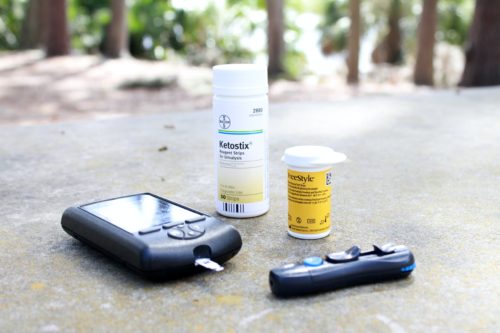How to Identify and Manage Chronic Wounds at Home: A Comprehensive Guide
Chronic wounds can be a major health challenge for individuals, particularly the elderly and those with underlying health conditions such as diabetes. Unlike acute wounds, which typically heal within a few weeks, chronic wounds persist for weeks, months, or even years, leading to significant physical, emotional, and financial burdens for patients and caregivers. Understanding the types of chronic wounds, their underlying causes, and how to manage them effectively at home is crucial for promoting healing, preventing complications, and improving the quality of life for those affected.
This blog will explore the different types of chronic wounds, including diabetic ulcers, pressure ulcers, venous ulcers, and arterial ulcers. It will provide practical advice for caregivers on how to manage these wounds effectively in a home setting, ensuring the best outcomes for the individual.
What Are Chronic Wounds?
Chronic wounds are those that fail to follow the normal stages of wound healing and instead persist for a prolonged period of time. They can be caused by a variety of factors, including poor circulation, diabetes, malnutrition, infection, or pressure. These wounds often become complicated by tissue damage, bacterial infections, and inflammation, making them difficult to treat.
The main difference between acute and chronic wounds is their healing time. Acute wounds, such as those caused by a cut or burn, typically heal within a few weeks. Chronic wounds, however, show little to no progress in healing over time. The inability to heal leads to prolonged pain, risk of infection, and sometimes, disability or amputation.
Types of Chronic Wounds
There are several different types of chronic wounds, each with its own specific causes, risk factors, and treatment protocols. Some of the most common chronic wounds include:
1. Diabetic Ulcers
What Are They?
Diabetic ulcers are open sores or wounds that occur primarily in people with diabetes. These ulcers most often form on the feet, but they can appear on other parts of the body as well. They result from poor blood circulation and nerve damage, which are common complications of diabetes.
Risk Factors:
- Poor blood sugar control
- Nerve damage (neuropathy)
- Poor circulation
- Foot deformities or pressure on the feet
Symptoms:
- Painful, slow-to-heal wounds on the feet or lower legs
- Redness, swelling, or warmth around the wound
- Discharge or drainage from the wound
2. Pressure Ulcers (Bedsores)
What Are They?
Pressure ulcers, also known as bedsores or decubitus ulcers, develop when prolonged pressure cuts off blood flow to certain areas of the skin, particularly over bony areas like the heels, elbows, and tailbone. These ulcers are most commonly seen in people who are bedridden, wheelchair-bound, or have limited mobility.
Risk Factors:
- Immobility or prolonged bed rest
- Incontinence (moisture against the skin)
- Poor nutrition
- Dehydration
- Decreased sensation (as in diabetic neuropathy)
Symptoms:
- Red or discolored areas of skin
- Blisters or open sores
- Pain or tenderness over the affected area
3. Venous Ulcers
What Are They?
Venous ulcers are chronic wounds that typically form on the lower legs, often around the ankles. They result from poor venous circulation, which prevents the proper return of blood from the legs back to the heart. This condition is commonly seen in people with varicose veins or chronic venous insufficiency.
Risk Factors:
- Varicose veins
- Obesity
- Previous leg injury or surgery
- Prolonged standing or sitting
- Aging
Symptoms:
- Shallow, irregular-shaped wounds
- Swelling and varicose veins around the wound area
- Discolored or darkened skin
- Pain and itching
4. Arterial Ulcers
What Are They?
Arterial ulcers occur when blood flow to the limbs is reduced due to blockages in the arteries, a condition known as peripheral arterial disease (PAD). These ulcers are often painful and tend to form on the feet or legs.
Risk Factors:
- Peripheral artery disease (PAD)
- Smoking
- Diabetes
- High blood pressure
- High cholesterol levels
Symptoms:
- Cold, pale, or blue skin around the ulcer
- Severe pain in the affected area, especially when elevated
- Small, round ulcers with well-defined edges
- Slow wound healing
How to Manage Chronic Wounds at Home
Managing chronic wounds at home can be challenging, but with the right knowledge and tools, caregivers can effectively support healing and prevent complications. The following tips provide a step-by-step guide to managing different types of chronic wounds.
1. Keep the Wound Clean
The first and most important step in managing chronic wounds is to keep the wound clean to prevent infection. For most types of chronic wounds, gentle cleansing with mild soap and water is adequate. Avoid using harsh antiseptics like hydrogen peroxide or iodine, as these can damage the tissue and delay healing.
Steps for Cleaning:
- Wash your hands thoroughly before and after handling the wound.
- Clean the wound gently with mild soap and water.
- Use a clean gauze or cloth to pat the area dry.
- Avoid scrubbing or irritating the wound.
2. Use the Right Dressings
Choosing the appropriate dressing for the wound is critical for promoting healing. Dressings help to protect the wound from infection, absorb excess fluid, and maintain a moist environment that supports tissue regeneration.
There are various types of wound dressings available, such as:
- Hydrocolloid dressings: Good for diabetic and pressure ulcers as they promote moisture retention.
- Foam dressings: Ideal for venous ulcers and other wounds with significant exudate.
- Alginate dressings: Suitable for heavily draining wounds, especially venous ulcers.
Tips for Choosing the Right Dressing:
- For diabetic ulcers, consider dressings that maintain moisture and prevent infection.
- Pressure ulcers benefit from dressings that cushion the affected area to reduce further pressure.
- Venous ulcers may require compression therapy, often in the form of bandages, to help reduce swelling and improve circulation.
3. Manage Moisture and Keep the Area Dry
Moisture control is key in chronic wound management. While a moist environment is necessary for healing, excess moisture can lead to skin maceration, which complicates healing and increases the risk of infection. The use of appropriate dressings helps manage this balance.
Key Points:
- Change dressings regularly, according to the wound’s drainage level and the type of dressing used.
- Consider using moisture barriers around the wound’s edges to prevent skin breakdown.
- For pressure ulcers, rotate the patient frequently to avoid prolonged pressure on the affected areas.
4. Monitor for Signs of Infection
Chronic wounds are highly susceptible to infection due to the prolonged nature of the injury and compromised tissue integrity. As a caregiver, it is important to monitor for early signs of infection, which include:
- Increased redness, warmth, or swelling around the wound
- Pus or cloudy drainage
- Foul odor from the wound
- Increased pain or tenderness
- Fever or chills
If any of these symptoms occur, contact a healthcare provider immediately. Infections can spread quickly and may require antibiotics or other treatments.
5. Control Pain and Discomfort
Managing pain is an important aspect of chronic wound care. Individuals with chronic wounds may experience significant pain, especially if the wound is located on a weight-bearing area or is frequently irritated by clothing or movement.
Pain Management Tips:
- Over-the-counter pain medications (such as acetaminophen or ibuprofen) may be helpful, but consult a healthcare provider for recommendations.
- Apply dressings that cushion the wound and prevent friction.
- Elevate the affected limb (if appropriate) to reduce swelling and discomfort.
6. Promote Good Nutrition
Proper nutrition is crucial for wound healing. The body requires a variety of nutrients, including protein, vitamins A and C, and zinc, to support tissue repair and immune function. A well-balanced diet can help improve the chances of wound healing and reduce the risk of complications.
Nutritional Tips for Wound Healing:
- Ensure the patient is consuming enough protein (found in meat, fish, eggs, and legumes).
- Incorporate fruits and vegetables rich in vitamins A and C (such as leafy greens, oranges, and berries).
- Consider nutritional supplements if the patient has difficulty eating a well-balanced diet.
7. Seek Professional Help When Needed
While home management is essential for chronic wound care, some wounds may require professional intervention. Regular visits to a healthcare provider or wound care specialist are necessary to ensure the wound is healing properly and to adjust the treatment plan if needed. Professional treatments may include debridement (removal of dead tissue), advanced dressings, or even surgical intervention for severe cases.
Conclusion
Chronic wounds are complex and require consistent care, especially for individuals with underlying health conditions like diabetes. Understanding the type of wound and applying the right treatment strategies are essential for effective home management. With proper cleaning, appropriate dressings, pain management, and good nutrition, caregivers can play a crucial role in supporting the healing process and improving the quality of life for individuals with chronic wounds. Regular monitoring, professional guidance, and early intervention when complications arise are also vital to successful outcomes.
By following these practical steps and being vigilant, chronic wounds can be managed effectively at home, leading to better healing and reduced risk of complications.
Editor's Pick
Leave A Comment
Related Posts
- Published On: June 2, 2024
Transition from OASIS-E to OASIS-E1: Key Changes and Implications for […]
- Published On: May 28, 2024
Importance of Clinical Narrative and Nurse Teachings while Documenting Home Health OASIS Assessments
Importance of Clinical Narrative and Nurse Teachings while Documenting Home […]
- Published On: April 29, 2025
Navigating the Complexities of Medicare and Medicaid Reimbursement for Home […]
- Published On: April 27, 2025
Engaging Your Team Around the IPR: Turning Data into Motivation […]
- Published On: April 27, 2025
Engaging Your Team Around the IPR: Turning Data into Motivation […]

